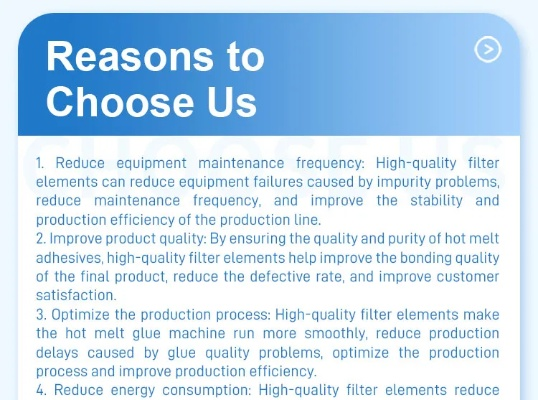The Innovative Approach to Heat-Sensitive Textiles:A Comprehensive Guide
: A Comprehensive Guide to Heat-Sensitive Textiles,Abstract: ,Heat-sensitive textiles are a rapidly growing market due to their unique properties that make them ideal for applications such as temperature-responsive clothing, smart home technology, and biomedical devices. This guide provides an in-depth overview of the innovative approaches used in developing heat-sensitive textiles, from the materials used to the manufacturing processes and the various applications they can be utilized in. It covers topics such as the science behind thermal responsiveness, the different types of materials used, the techniques involved in fabricating these textiles, and how they can be integrated into various products. The guide also explores the challenges faced in manufacturing heat-sensitive textiles and how they are being addressed through advancements in technology and research. Overall, this comprehensive guide aims to provide a thorough understanding of the state-of-the-art in heat-sensitive textiles, offering valuable insights for those seeking to develop or utilize these innovative materials in their projects.
Introduction: Heat-sensitive textiles are a fascinating field of research and application that has revolutionized the way we interact with fabrics. These materials exhibit unique properties such as temperature sensitivity, shape memory, or light-induced changes, which make them ideal for applications in smart clothing, automotive interiors, and more. In this guide, we will explore the various types of heat-sensitive textiles, their benefits, and how they can be utilized in practical scenarios.
Types of Heat-Sensitive Textiles:
-
Shape Memory Polymers (SMPs): SMPs have the ability to change their shape when heated and return to their original shape once cooled. This property makes them ideal for creating garments that can adapt to the wearer's body shape. For example, a swimsuit made from SMP could adjust its form to fit the wearer's body while swimming.

-
Thermochromic Fabrics: These fabrics change color when heated due to the reversible reaction between two different polymers. They offer a visually appealing design element and can be used in fashion accessories or interior decor. For instance, a scarf made from thermochromic fabric could change color depending on the temperature outside.
-
Light-Induced Changes: Some textiles respond to changes in light, such as UV radiation or visible light, causing them to change color, texture, or shape. This property is useful for creating decorative patterns or functional elements in outdoor furniture or automotive interiors.
Benefits of Heat-Sensitive Textiles:
-
Customizable Designs: Heat-sensitive textiles allow designers to create unique and personalized garments that adapt to the wearer's body shape or preferences.
-
Enhanced Comfort: These textiles can provide enhanced comfort by adjusting to the wearer's needs, such as providing warmth or cooling during hot weather or keeping the wearer cool during cold weather.
-
Environmentally Friendly: Many heat-sensitive textiles are biodegradable or recyclable, making them environmentally friendly alternatives to traditional textiles.
Practical Applications:
-
Smart Garments: Heat-sensitive textiles can be used in smart clothing to provide real-time feedback about the wearer's activity level or fitness status. For example, a sportswear item could change color based on the intensity of the user's workout.
-
Automotive Interiors: Heat-sensitive textiles can be used in automotive interiors to create comfortable and stylish seating surfaces that adapt to the wearer's posture or preferences. For example, a car seat could adjust its angle based on the driver's height and weight.
-
Outdoor Furniture: Light-induced changes in outdoor furniture can create visually appealing designs or functional elements, such as changing colors or textures based on the time of day or weather conditions.
Case Study: One example of a successful application of heat-sensitive textiles is the development of smart underwear by a company called "TextiSense." TextiSense's underwear incorporates thermochromic technology that changes color based on the temperature inside the wearer's body. This technology allows users to monitor their health by tracking their heart rate or blood pressure without having to wear any additional devices. The company's underwear has been featured in popular TV shows and magazines, and it has received positive feedback from customers who appreciate the convenience and style of the product.
Conclusion: Heat-sensitive textiles represent a fascinating intersection between science and fashion. With their ability to adapt to the wearer's needs, these textiles offer endless possibilities for creating personalized and sustainable garments. As technology continues to advance, we can expect to see even more innovative applications of heat-sensitive textiles in the future. So why not embrace the future of fashion and sustainability with our hands on one of these groundbreaking textiles?

热敏纺织品概述
热敏纺织品是一种在特定温度下能够改变其物理特性的纺织品,广泛应用于医疗、服装、家居等领域,它们通常由导电纤维、敏感材料和特殊工艺制成,能够快速响应环境温度的变化,从而实现各种功能。
热敏纺织品的种类与特点
- 种类:热敏纺织品种类繁多,包括但不限于导电纤维织物、温度敏感涂料、温度敏感薄膜等。
- 特点:
- 高灵敏度:能够快速感知环境温度变化。
- 耐温范围广:适应各种温度环境。
- 环保可持续:采用环保材料,符合现代绿色纺织趋势。
- 多功能性:可应用于医疗、服装、家居等领域。
热敏纺织品的实际应用案例
医疗领域的应用
在医疗领域,热敏纺织品可用于监测体温、血压等生理指标,某些医用贴片采用热敏纺织品作为敏感材料,能够实时监测患者的体温变化,为医生提供准确的诊断依据,热敏纺织品还可用于制作温度敏感的医疗设备,如体温计、血压计等。
服装领域的应用
在服装领域,热敏纺织品可用于制作时尚服装,某些时尚围巾采用导电纤维织物,能够根据外部环境温度变化自动调节颜色和图案,展现出独特的时尚感,热敏纺织品还可用于制作家居用品,如温度感应的窗帘、空调伴侣等。
热敏纺织品的制备工艺与材料选择
- 制备工艺:热敏纺织品的制备工艺包括纤维制备、涂层制备、薄膜制备等,纤维制备是关键步骤,需要选用高导电性能的纤维材料,如金属纤维、导电聚合物纤维等,涂层制备和薄膜制备则需要根据具体应用场景选择合适的材料和工艺。
- 材料选择:热敏纺织品的材料选择需要考虑材料的耐温性能、导电性能、环保性能等因素,常用的热敏材料包括金属氧化物、导电聚合物等,还需要选用环保材料,如生物降解材料、可回收材料等,以实现纺织品的可持续发展。
热敏纺织品的未来发展趋势
随着科技的不断进步和人们对环保、可持续性需求的不断提高,热敏纺织品的未来发展将更加注重以下几个方面:
- 智能化:通过引入人工智能技术,实现热敏纺织品的智能化控制,提高其感知和响应环境温度的能力。
- 绿色环保:采用环保材料和工艺,实现热敏纺织品的绿色生产,符合现代绿色纺织趋势。
- 多功能性拓展:拓展热敏纺织品的用途,满足更多领域的需求,如医疗、航空航天等领域。
热敏纺织品作为一种新型纺织材料,具有广泛的应用前景,随着科技的不断进步和人们对环保、可持续性需求的不断提高,热敏纺织品的制备工艺和材料选择将更加注重智能化、绿色环保和多功能性拓展等方面,热敏纺织品将在更多领域发挥重要作用,为人们的生活带来更多便利和舒适。
Articles related to the knowledge points of this article:
The Global Landscape of Textile Exports
Textile Expo:A Multi-faceted Showcase of Trends and Opportunities



